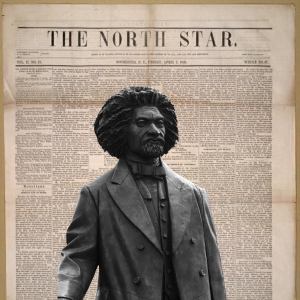The Man, The Myth, The Muralist: Kendel Joseph
3 min read
As featured in The Songs of the Shadows, by Phoenix Kabali
Kendel Joseph’s murals are more than color on concrete. They are stories stitched into the landscape, living reflections of the people and places that surround them. From city walls to island streets, his work honors the connection between art, history, and community.
In The Man, The Myth, The Muralist, part of The Songs of the Shadows, Phoenix Kabali explores how Joseph transforms walls into worlds. His process begins long before the first stroke of paint. “I think my mural art often starts with a random idea, something I saw in a dream,” Joseph explains. “I draw and doodle a lot and try to flesh out what I’m thinking in small format initially. Then I start to imagine what would fit well on the wall, think through the culture and history of the area, and create sketches and mockups before painting.”
For Joseph, murals are not just creative acts; they are conversations with the places they inhabit. He immerses himself in the community, walking the streets, meeting residents, and studying the textures of local life. “The most beautiful and important murals are made considering the world around them,” he says. “You have to get to know the people who are there and appreciate who they are by experiencing their home how they would.”
That empathy extends to how he views public art itself. Joseph accepts impermanence as part of the process. Buildings change, walls crumble, and murals fade, but the impact remains. “You win some, you lose some,” he says with a shrug. “It’s the nature of outdoor work. The building you painted on could be demolished or repurposed at any point. It’s an extremely temporary art form.”
Still, the reach of his work is undeniable. “It’s a privilege to paint in public space,” Joseph says. “This work puts your art in front of countless people daily, and you can impact them in ways you will never know.” Each piece becomes part of a community’s rhythm, its visual heartbeat.

Travel is another key thread in Joseph’s creative life. The natural world shapes his murals in subtle ways. “The world around me shows up constantly within my mural art,” he explains. “I intentionally reference flora and fauna that live in the surrounding area, using photos I take while walking around as reference for my pieces.” Whether in an urban alley or a coastal town, his work carries the local air, light, and rhythm.
Painting, for Joseph, is both physical and emotional endurance. Large-scale murals demand long hours of concentration and physical effort. “I get into a flow state, completely focused on the art I’m making,” he says. “Physically I’m exhausted, but I feel joy doing something I love for a living.”
Among his most personal works is a mural created for his grandmother in St. Kitts and Nevis. “It embodies the energy of returning home after a long time and finding who you are in your lineage,” he reflects. “It gave me a lot of power and connected me deeply to who I am as a person.”
Collaboration is another essential part of his art. Working with youth groups, other artists, and communities has taught him humility and openness. “Community-oriented projects have taught me to let go of the artist ego,” he says. “To appreciate that everyone has something to teach you.”
Through Phoenix Kabali’s lens, Kendel Joseph emerges not only as a muralist but as a storyteller of space. His art exists where imagination meets environment, where walls become mirrors, and where creativity becomes a form of care.
Read the full story, “The Man, The Myth, The Muralist: Kendel Joseph,” in the latest issue of Intellectual Ink Magazine. Available now on Amazon and IntellectualInk.com.







